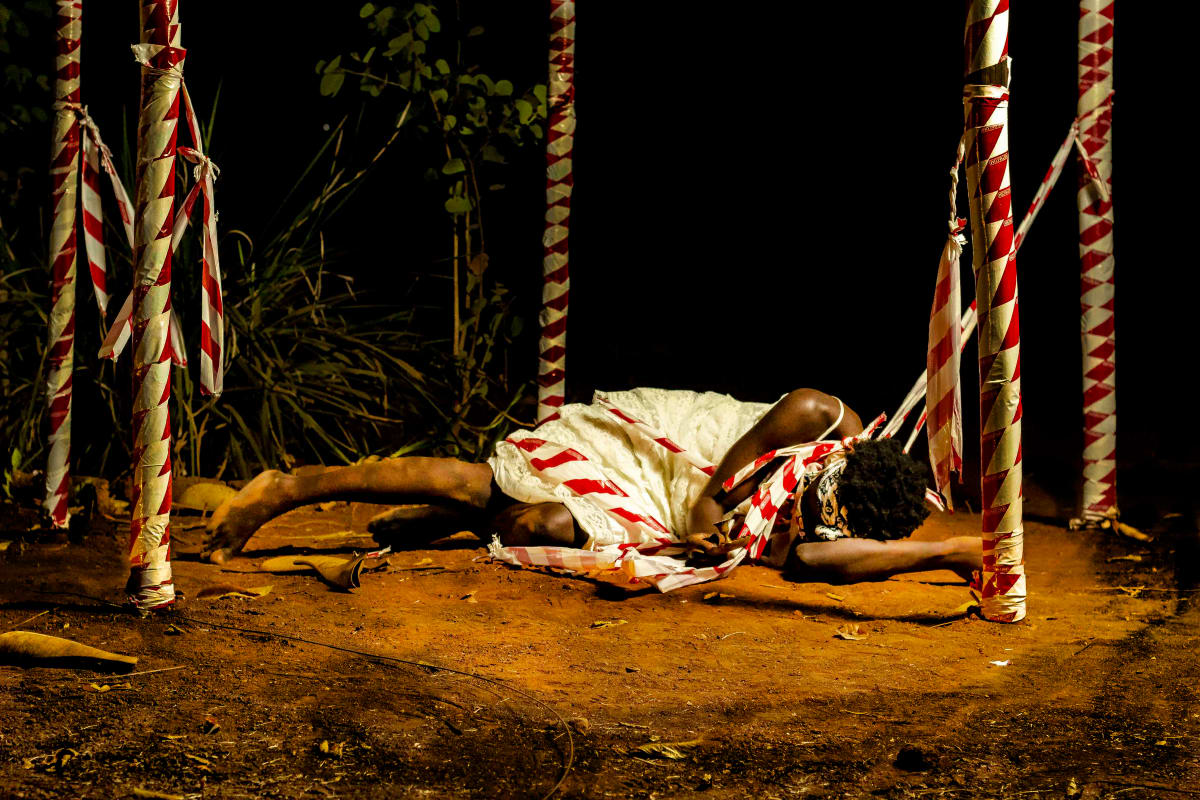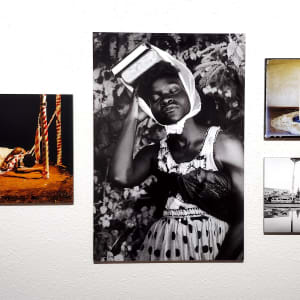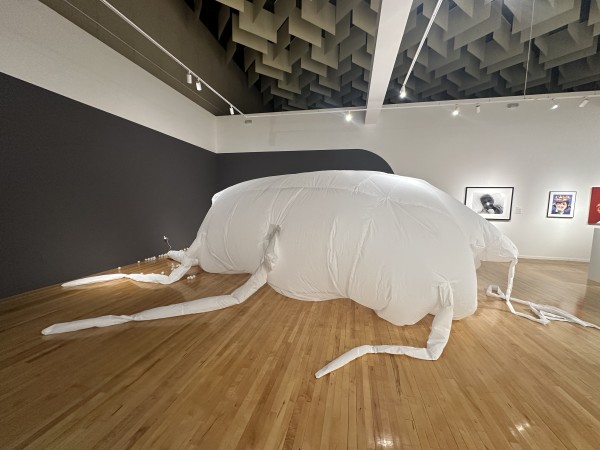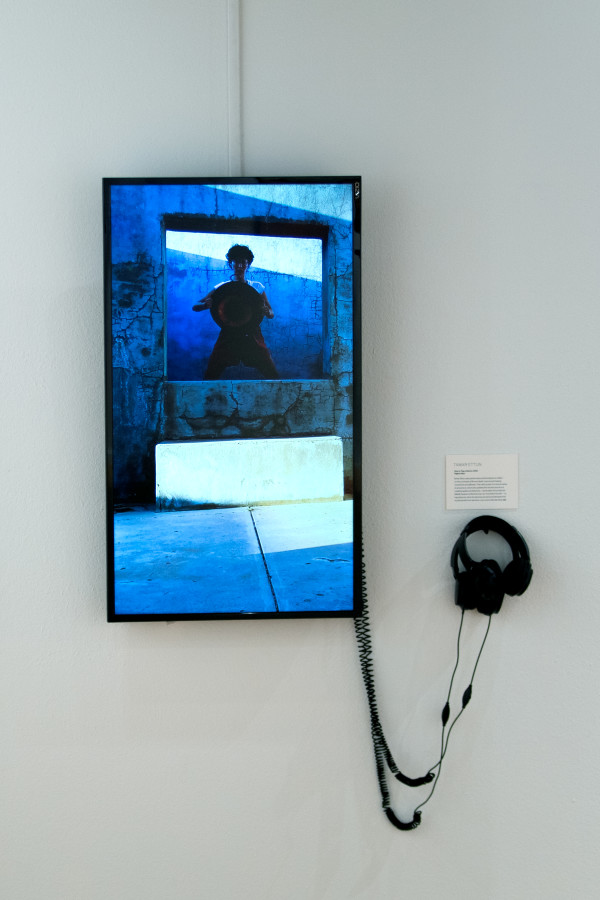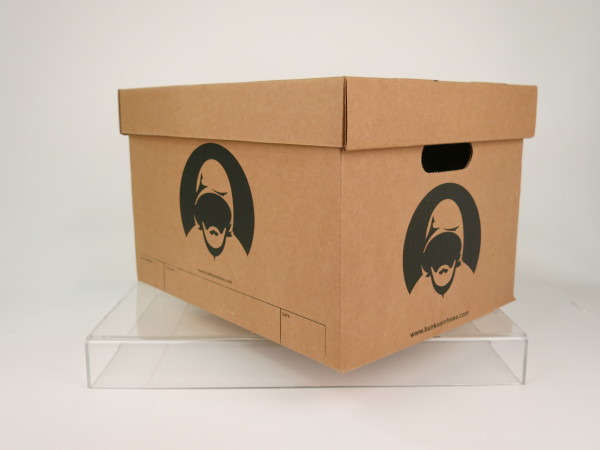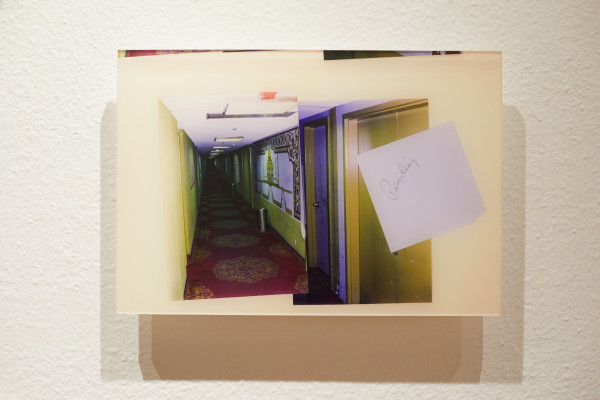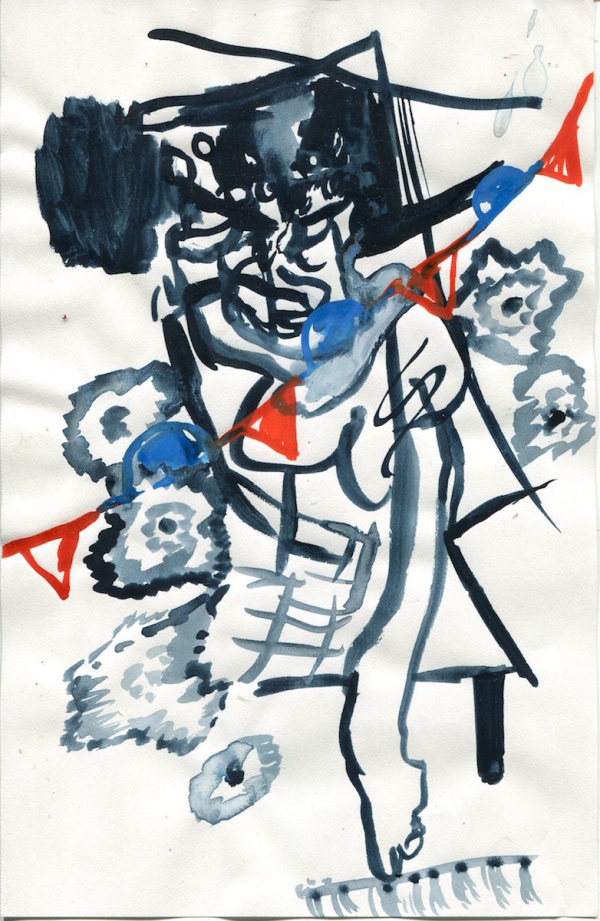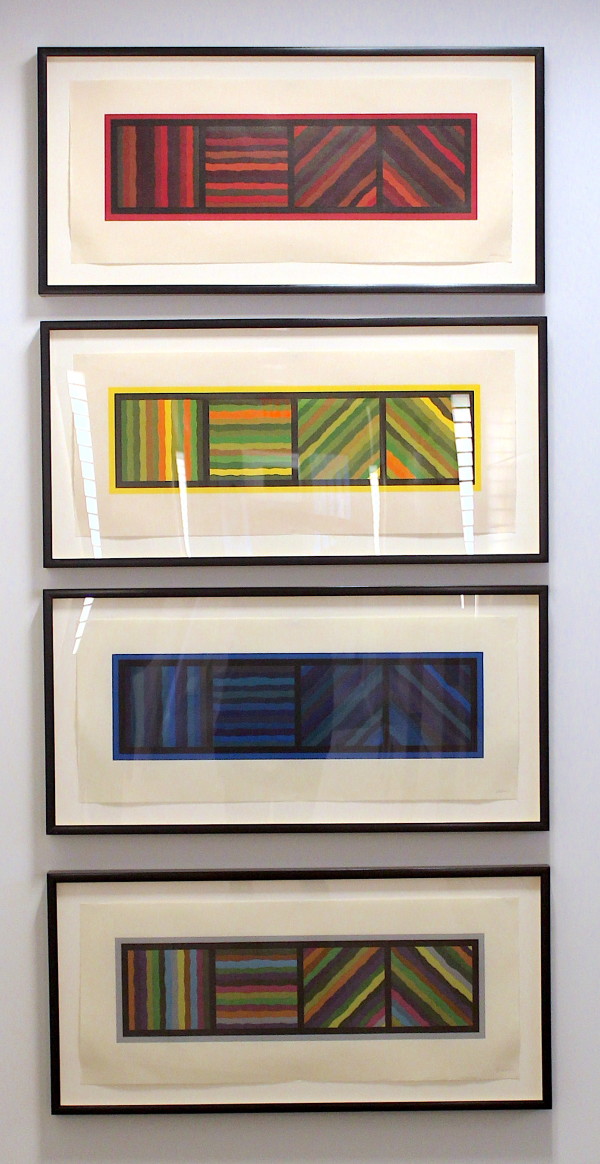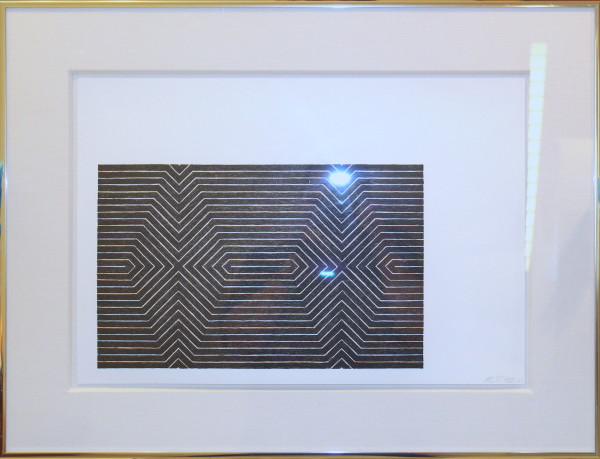
UNLV Marjorie Barrick Museum of Art
Las Vegas, Nevada
We believe everyone deserves access to art that challenges our understanding of the present and inspires us to create a future that makes space for us all.
MessageNothando Chiwanga
Trapped, 2018
Photography
Courtesy of the artist
Dealing with a wide range of themes, these works represent Nothando Chiwanga’s performance and photographic practice. Reflections shows an almost deserted kombi rank (commuter van stop) in Harare, a rare occurrence before the COVID-19 related lockdown, and is quite prophetic of the ghost city Harare has become during the pandemic. Beyond this, it reveals the poor maintenance of the majority of the city, which is usually obscured by the constant throng of people. Trapped addresses the historical suppression of black women. An Act and Zvokudya (Food) are, by extension, a commentary on the need to counterbalance rising unemployment and poverty with education—issues that have been exacerbated by the global pandemic. In a nation where we do not ask enough questions, the national and municipal government systems have taught us to be resilient. We are constantly negotiating ourselves into situations that lead us to suppressing our emotions instead of expressing them.
There is a haunting beauty to Chiwanga’s portrayal of life in Harare, and in Zimbabwe more general. The city is named after a chief of the Seke area in the 1890s, Chief Neharawa, whose nickname was Harari, which translates as “he never sleeps” and has come to embody the essence of the city. There is movement everywhere in Harare, at any given time. An incessant rush of people and traffic jams have come to characterize the city. Chiwanga’s works in the exhibition speak about the complications of being Hararian: bodies are in a constant state of motion to survive in a city that is divided along the lines of lack and privilege.
– Fadzai Veronica Muchemwa (based in Grahamstown, South Africa)
